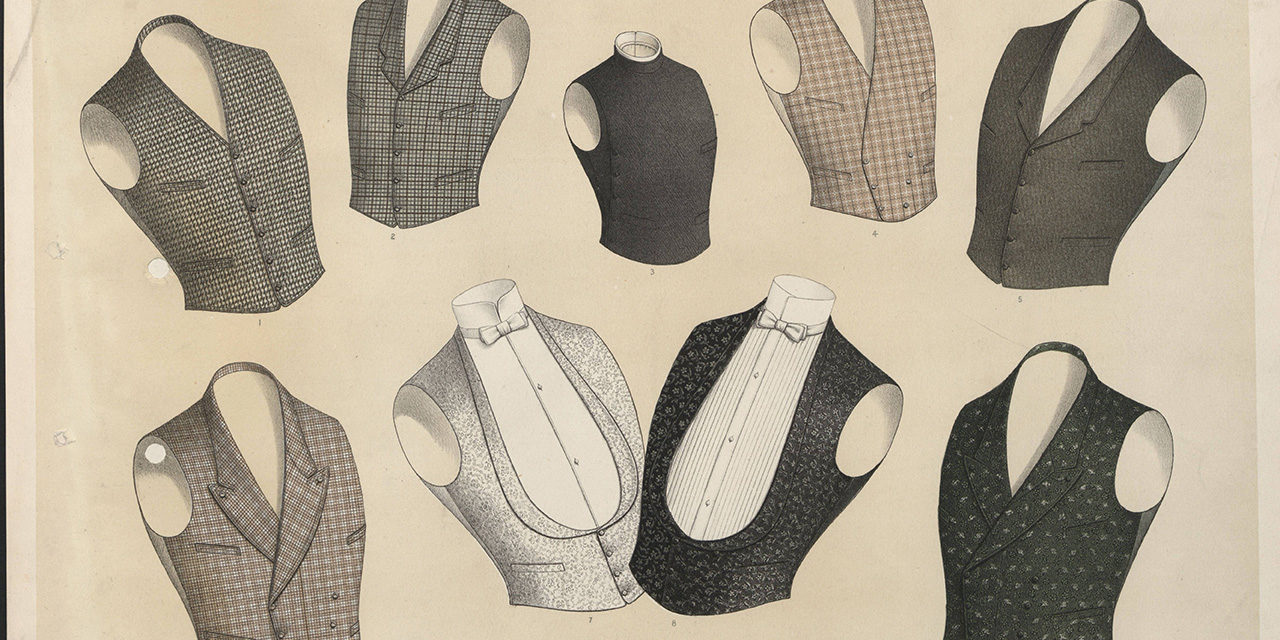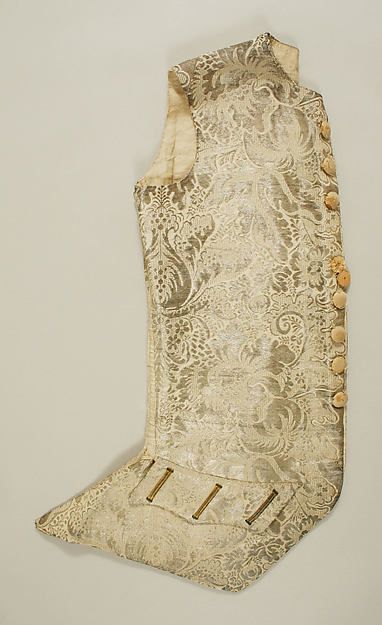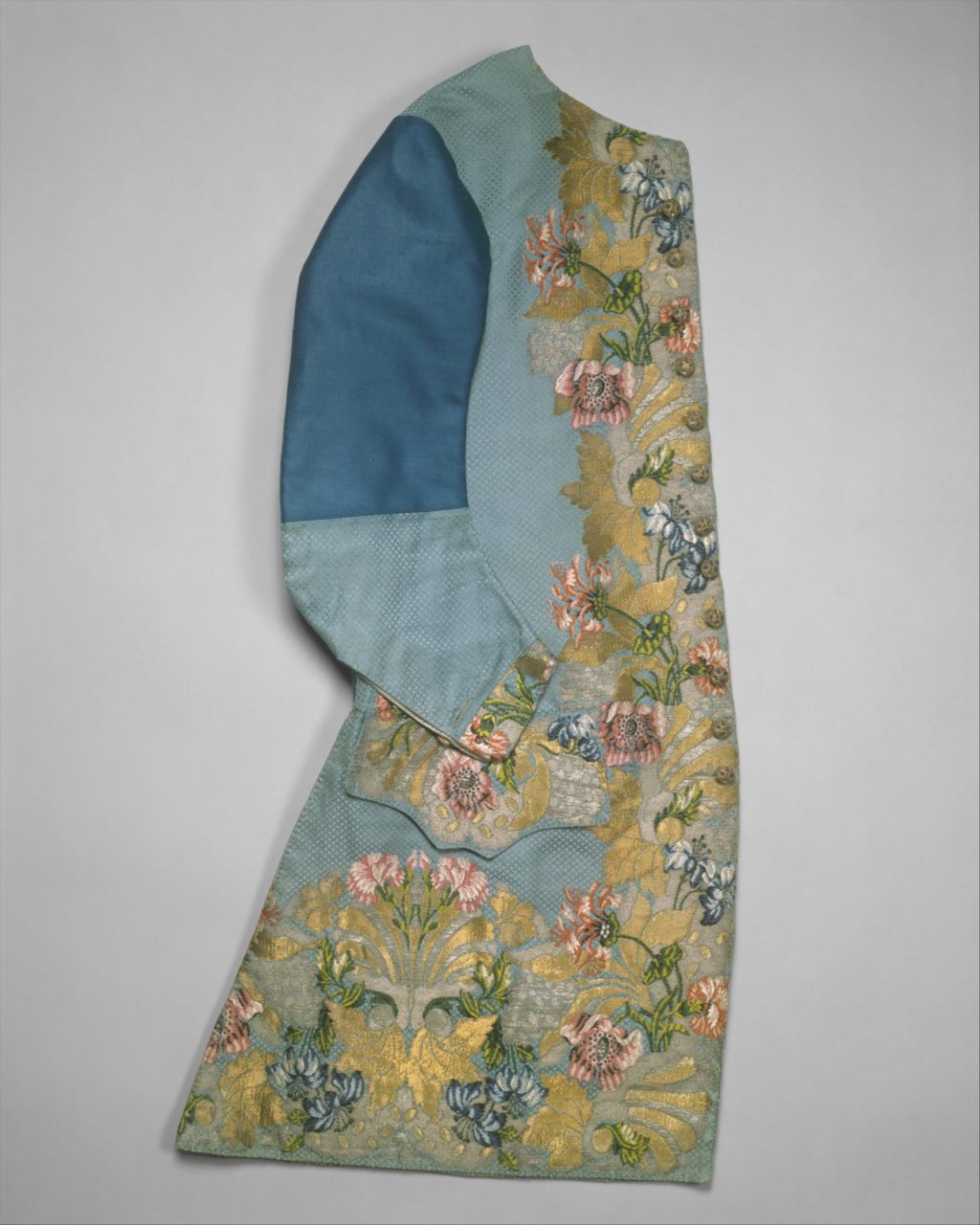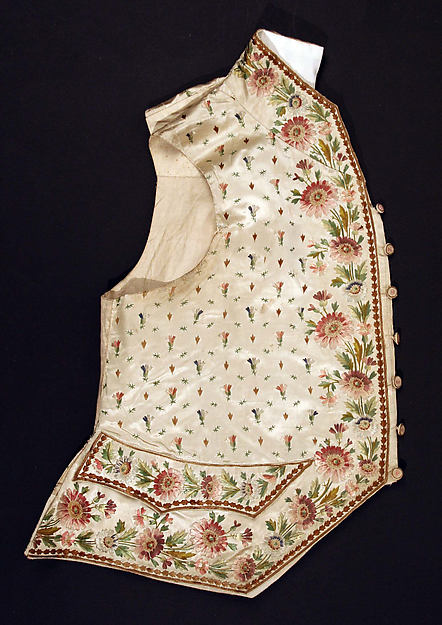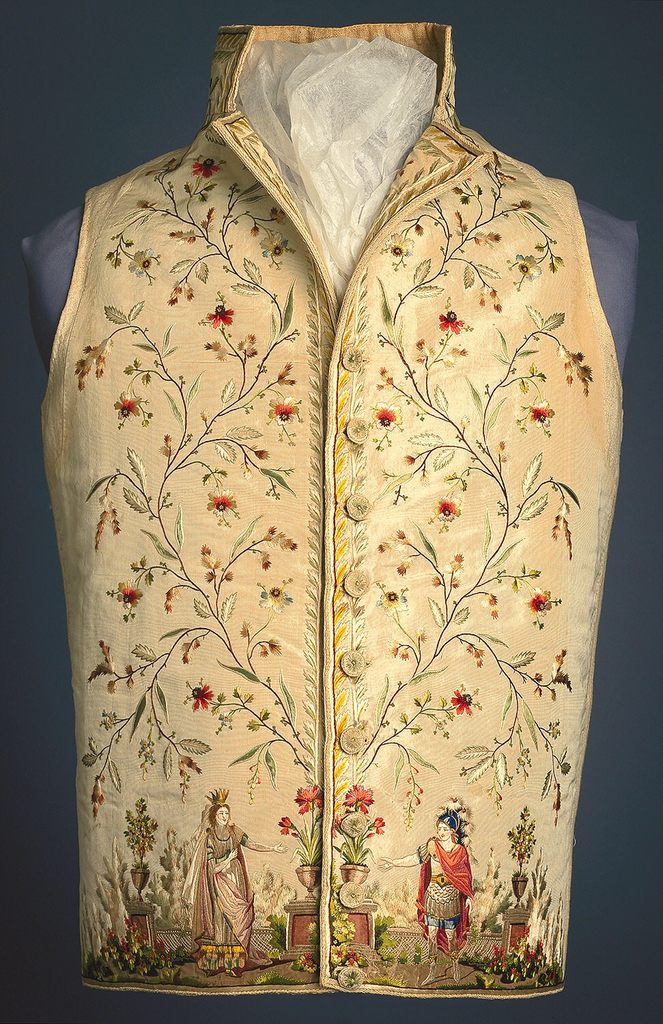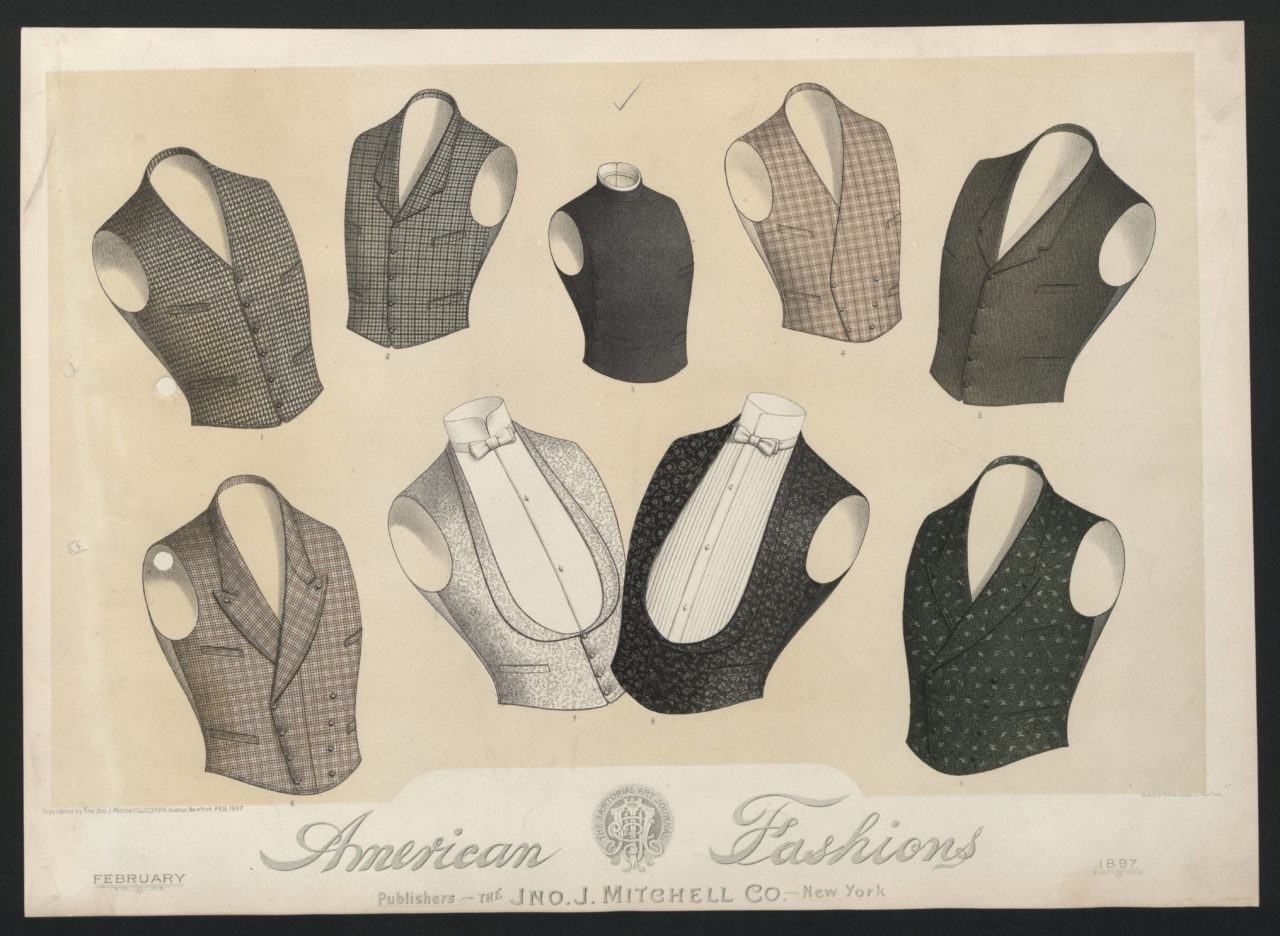A close-fitting inner garment, usually worn between jacket and shirt.
The Details
I
n The Dictionary of Costume (1987), Ruth Turner Wilcox writes of the waistcoat:
“In men’s wear, a continuation of the doublet of the Middle Ages. A sleeveless but lined body jacket, waist-length, and worn between jacket and dress shirt. Made single- or double- breasted, of constructing color or fabric or matching the suit cloth. A backless waistcoat appeared in the 1950s for summer wear. It consists of two front pieces buttoned center front. Two narrow belt pieces, attached to the sides, buckled in back; the fronts also joined by a narrow neckband in back.” (391)
According to Tom Greatrex in The Berg Companion to Fashion (2010):
“The waistcoat, or vest (as it is known in the United States), is a close-fitting sleeveless garment originally designed for men that buttons (or occasionally zips) down the front to the waist. Produced in either single or double-breasted styles, the waistcoat is designed to be worn underneath a suit or jacket, although it does not necessarily have to match. Similar garments are worn by women.”
Waistcoat styles vary dramatically over the centuries with skirts and sleeves eventually being eliminated. Elaborate embroidery effects are common in the 18th century (Figs. 2-4). In the late 19th century, vests designed for women became more common (Fig. 6).
Fig. 1 - Waistcoat (Italian). Waistcoat, 17th century. Silk. New York: The Metropolitan Museum of Art, C.I.63.26a–f. Purchase, Irene Lewisohn Bequest, 1963. Source: The Met
Fig. 2 - Textile design by Anna Maria Garthwaite (British, 1690–1763). Waistcoat, 1747. Silk, wool, metallic. New York: The Metropolitan Museum of Art, C.I.66.14.2. Purchase, Irene Lewisohn Bequest, 1966. Source: The Met
Fig. 3 - Designer unknown (Italian). Waistcoat, 18th century. Silk, metal. New York: The Metropolitan Museum of Art, 43.127.1. Gift of Martin Birnbaum, 1943. Source: The Met
Fig. 4 - Designer unknown (French). Waistcoat, 18th century. Silk. New York: The Metropolitan Museum of Art, 33.124.5. Gift of Henry Dazian, 1933. Source: The Met
Fig. 5 - Designer unknown (French). Waistcoat, 1785–1795. Embroidered silk. New York: Cooper Hewitt, Smithsonian Design Museum. Bequest of Richard Cranch Greenleaf in memory of his mother, Adeline Emma Greenleaf. 1962-54-47. Source: Cooper Hewitt
The Dictionary of Fashion History (2010) gives a chronology for the use of the word vest in menswear:
Period: 1660s–1670s.
A knee-length coat with elbow sleeves, generally confined at the waist by a sash or buckled girdle, and always worn under a tunic or surcoat. This tunic and vest, mainly a court fashion in England, was the forerunner of the coat-and-waistcoat style and the origin of the man’s suit.
Period: 19th century onwards.
Synonymous with waistcoat; the American term is still “vest”.
For women, the vest arrives later and takes several forms before resembling the menswear garment familiar today:
Period: 1794 into 19th century.
A short, sleeveless bodice of varying design, worn with full evening dress.
Period: Early 19th century.
A term for the French long corset. “New invented Parisian vests…made of rich French Twillet, with double cased bones that will never break. The form of them is particularly elegant, by a Reserve on the peak…(which) has the pleasant and very essential effect of keeping the gores…in the proper position, and obviates that unpleasant rucking and chafing that is in all the long corsets that have been invented…” (Advert., July 3, 1802, Norfolk Chronicle).
Fig. 6 - Artist unknown. Waistcoats (L) & Single and double-breasted vest patterns for ladies (R), 1834-1890. Source: Victorian Fashion
Fig. 7 - Jno J. Mitchell Company (American). American fashions, men's vests, February 1897. New York: The Metropolitan Museum of Art, b1752524x. Gift of Woodman Thompson. Source: The Met
Its Afterlife
In Fall 2009, Dolce & Gabbana’s ready-to-wear for men (Fig. 8) included vests. In A.F. Vandevorst’s 2016 Spring/Summer women’s collection, the vest was featured prominently (Fig. 9).
Fig. 8 - Dolce & Gabbana. Milan Fashion Week, Fall/Winter 2009/10. Source: China Daily
Fig. 9 - A.F. Vandevorst. Women's Runway, Spring Summer 2016. Source: Denim Jeans Observer
References:
- Cumming, Valerie, C. W. Cunnington, and P. E. Cunnington. “Vest.” In The Dictionary of Fashion History, 218. Oxford: Berg Publishers, 2010. Accessed January 17, 2018. https://www.bloomsburyfashioncentral.com/products/berg-fashion-library/dictionary/the-dictionary-of-fashion-history/vest.
- Greatrex, Tom. “Waistcoat.” In The Berg Companion to Fashion, edited by Valerie Steele. Oxford: Bloomsbury Academic, 2010. Accessed October 03, 2017. https://www.bloomsburyfashioncentral.com/products/berg-fashion-library/encyclopedia/the-berg-companion-to-fashion/waistcoat.
- Hill, Daniel Delis. History of World Costume and Fashion. Upper Saddle River, NJ: Pearson Prentice Hall, 2011. http://www.worldcat.org/oclc/768100950.
- Picken, Mary Brooks. The Fashion Dictionary;: Fabric, Sewing, and Apparel as Expressed in the Language of Fashion. Rev. and enl. New York: Funk & Wagnalls, 1973. http://www.worldcat.org/oclc/572308967.
- Wilcox, R. Turner. The Dictionary of Costume. 1st Macmillan Hudson River ed. New York: Macmillan, 1987. http://www.worldcat.org/oclc/456762613.
- Yarwood, Doreen. Encyclopedia of World Costume. New York: Scribner, 1978. http://www.worldcat.org/oclc/841465233.

